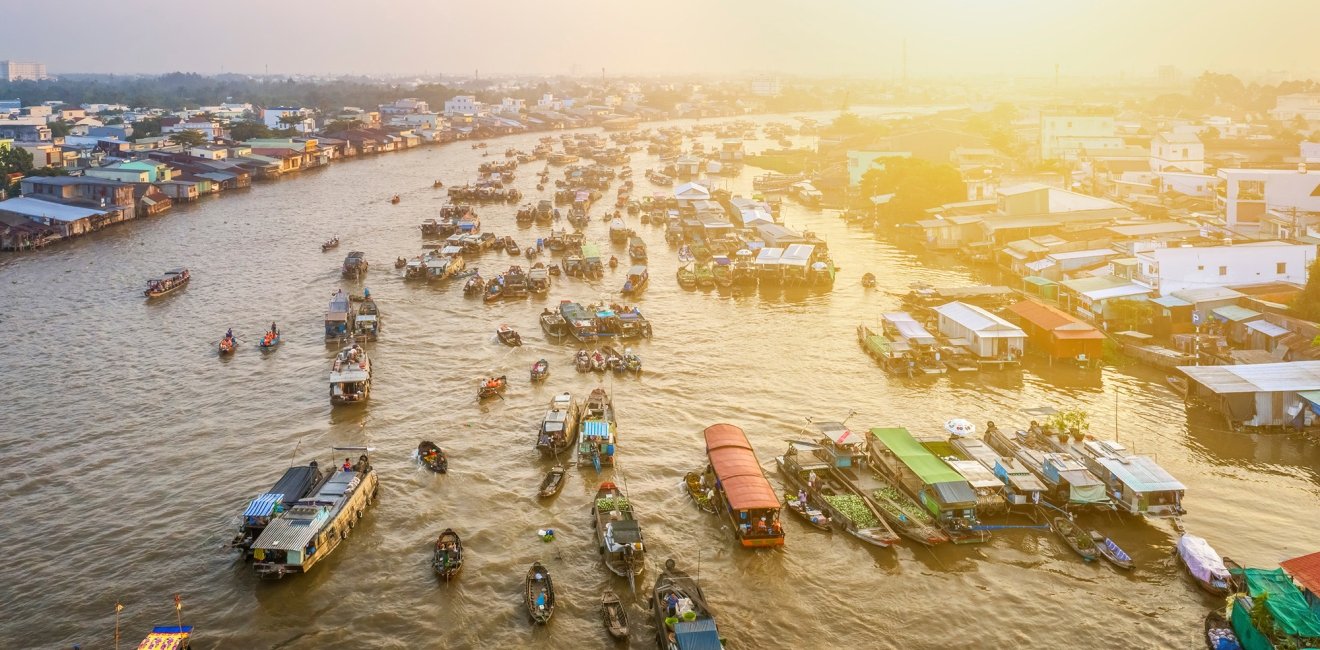
A blog of the Indo-Pacific Program
While the Association of Southeast Asian Nations (ASEAN) remains a key regional organization within Southeast Asia, it has at times struggled to contend with a range of subregional challenges. Among these is the subject of the Mekong River, one of the world’s largest and longest rivers which runs through five ASEAN countries – Cambodia, Laos, Myanmar, Thailand and Vietnam – and lies at the heart of some of the broader issues the regional grouping confronts today.
Though the Mekong had long played an important role in Southeast Asia’s development, ASEAN’s Mekong challenge truly surfaced in a contemporary sense once Cambodia, Laos, Myanmar and Vietnam – the so-called CLMV countries – were admitted into the expanded organization in the 1990s. Even then, ASEAN’s initial role on the issue was quite limited relatively speaking. Despite some moves such as the initial establishment of the ASEAN Mekong Basin Development Cooperation (AMBDC) platform in 1996, the regional grouping was typically not deeply and directly involved in Mekong-related matters.
Over the past few years, however, the Mekong’s significance has grown such that it presents a challenge ASEAN needs to more urgently address. Environmentally, it affects the lives of at least 60 million ASEAN citizens who depend on it for food, water, transportation, agriculture and trade.
The Mekong has become a test for ASEAN centrality as it emerges as an area of growing competition
Economically, it is a key pathway for addressing remaining development gaps that exist between mainland Southeast Asia and maritime Southeast Asia which ASEAN has repeatedly committed to addressing. And geopolitically, the Mekong has become a test for ASEAN centrality as it emerges as an area of growing competition, with various plans by outside powers such as China’s Lancang Mekong Cooperation and the United States’ U.S.-Mekong Partnership.
ASEAN countries have begun to notice and elevate the status of the Mekong. Some mainland Southeast Asian countries such as Vietnam have attempted to put the issue more firmly on the ASEAN agenda when they are able to do so. ASEAN has also attempted to take a greater role in the management of Mekong issues, as evidenced by developments such as ASEAN Secretariat participation in Mekong-related interactions including the Friends of the Mekong mechanism that also includes the United States, Australia, Japan, New Zealand, the European Union, the Asian Development Bank and the World Bank.
Yet confronting ASEAN’s growing Mekong challenge will likely require more robust steps in at least three main lines of effort. One line of effort is helping to widen the array economic choices available to lesser developed Mekong countries, which is key to their ability to maximize their autonomy in the face of growing pressures from external powers. Beyond bilateral assistance from more developed Southeast Asian states, ASEAN as an institution could also reinforce economic initiatives that could prove significant in this regard, be it on regional integration more generally or specific programs such as the Master Plan for ASEAN Connectivity 2025 which has had its share of challenges over the past few years.
A second line of effort would be increasing ASEAN’s relationship with subregional entities. While it is certainly true that the Mekong may be a subregional issue, there is precedent for such matters being elevated to a regional level, be it on issues ranging from migrant workers to transboundary haze pollution. For all its limitations, the Mekong River Commission (MRC) would be a place to start given its status to date as the only international treaty based intergovernmental organization in the Mekong. Though ASEAN and the MRC inked a cooperation framework back in 2018, formal meetings between the two have only just begun to take off on specific subjects such as water security, and these could be made more frequent and more comprehensive. Beyond this, ASEAN could also revive previous mechanisms that it has utilized such as the AMBDC or invest more in initiatives like it to facilitate greater linkages between the Mekong subregion and Southeast Asia as a whole.
A third line of effort is finding a way to enhance the harmonization of the expanding array of external cooperation mechanisms related to the Mekong. While engagement with individual mechanisms is obviously up to individual countries, ASEAN can play a valuable role in helping streamline various initiatives, be it external ones such as China’s LMC and Thailand’s Ayeyawady-Chao-Phraya-Mekong Economic Cooperation Strategy (ACMECS). To take just one example of potential efforts in this vein, Indonesia’s foreign minister Marty Natalegawa has suggested that ASEAN could have a code of sorts to preempt tensions that emerge with respect to cooperation in the Mekong region that could be against the regional grouping’s interests.
Whatever incremental progress is achieved, ASEAN will be swimming against the tide of fast-moving developments, including climate change-related impacts and China’s own growing energy demand
To be sure, making advances in these lines of effort would not be without their challenges. As useful as ASEAN’s mechanisms such as consensus-based decisionmaking or annually rotating chairmanships may have been when they were deliberately agreed upon during the institution’s founding in 1967, they can make it more difficult to push through and then sustain new and ambitious commitments. Even if attempted inroads are made, individual Mekong countries and external powers have their own visions for the region, and there may be some resistance on some of ASEAN’s own forays. And whatever incremental progress is achieved, ASEAN will be swimming against the tide of fast-moving developments, including climate change-related impacts and China’s own growing energy demand which is powering its quest for greater hydropower in the Mekong.
Yet the severe implications of leaving ASEAN’s Mekong challenge unaddressed – including wrecked economies and livelihoods, rising regional divisions and the loss of ASEAN’s much-prized centrality – call for more concerted and urgent action. Given the stakes, there is more than enough of a case for ASEAN to overcome lingering challenges and act urgently to address what has become one of the most significant geopolitical challenges in Southeast Asia.
Follow Prashanth Parameswaran, Asia Program Global Fellow, on Twitter @TheAsianist.
The views expressed are the author's alone, and do not represent the views of the U.S. Government or the Wilson Center. Copyright 2020, Asia Program. All rights reserved.
Author

CEO and Founder, ASEAN Wonk Global, and Senior Columnist, The Diplomat

Indo-Pacific Program
The Indo-Pacific Program promotes policy debate and intellectual discussions on US interests in the Asia-Pacific as well as political, economic, security, and social issues relating to the world’s most populous and economically dynamic region. Read more





